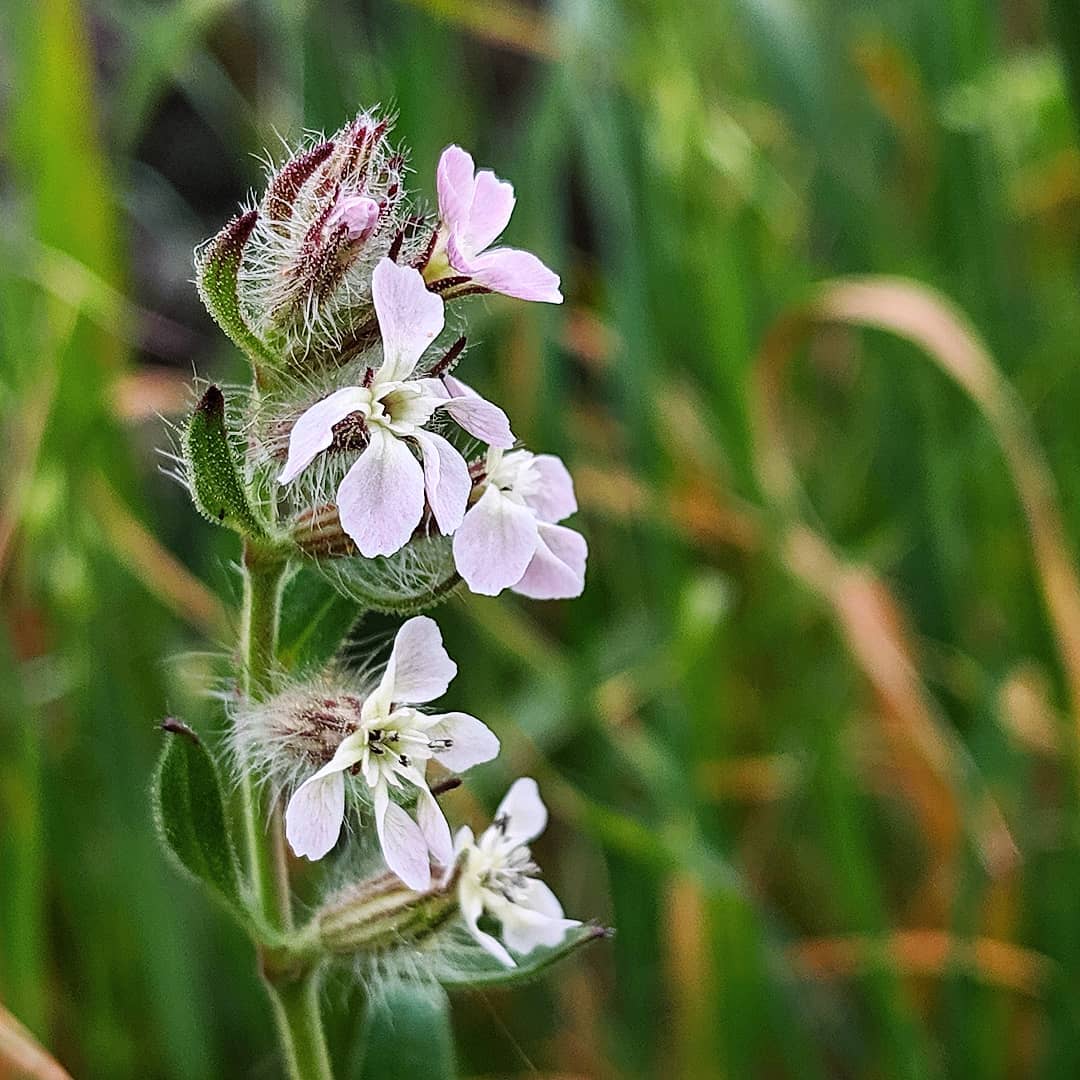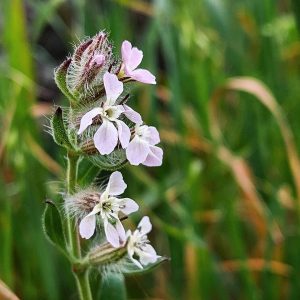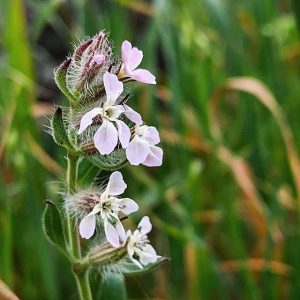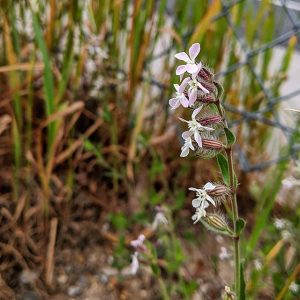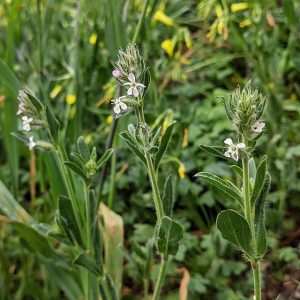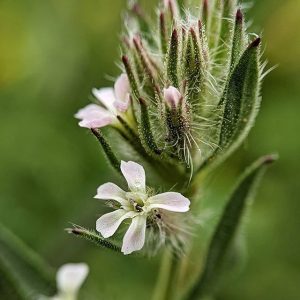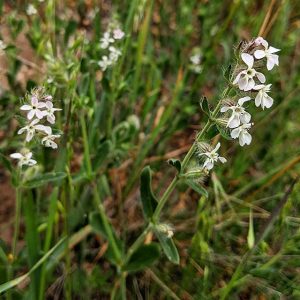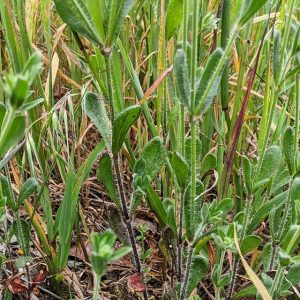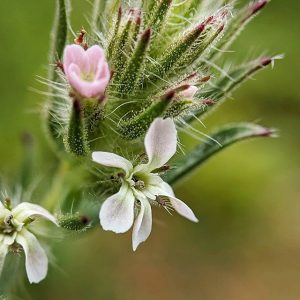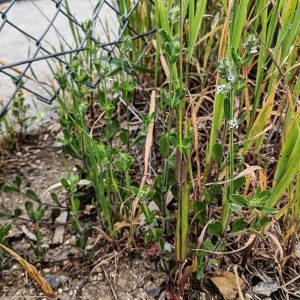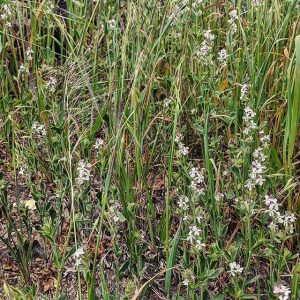Common Catchfly (Silene gallica), a species of southern European origin distributed around the world as a contaminant in imported crop seed.
Common Catchfly was recorded in South Australia as early as 1848, when it was picked up in several locations to the north and east of Adelaide. In the 1860s it raised concern in the state as a weed capable of overrunning grain crops, and whose appearance served as a symptom or harbinger of failing corn and wheat plantings. Although these failures stemmed from the land having been poorly managed, or too dry and infertile to support the crops, the association was hard to shake; per an 1865 letter-writer: ‘In all places where the [corn] disease appears the well known weed Silene gallica commences to grow, even if it had never been found in the neighbourhood before.’ However, as a later account summarised in describing the association of Common Catchfly with wheat failures known as ’Take-all’, ‘the weeds are merely there because the death of the wheat-plants gave them room to grow.’
In Victoria, the Common Catchfly was collected ‘near Melbourne’ in 1869, and from the Grampians in 1871; by 1873 it was also described as ‘common on the stony ridges around Brisbane’ in QLD. Newspaper accounts bemoaned that cattle and horses would not eat it.
The photographed plants are established on dry, sandy soil on verge and immediate downslope areas below a section of Yarra Boulevard in Kew.
View Original Post on Instagram
Search for information about Silene gallica in the Flora of Victoria
View information and occurrences of Silene gallica on the Atlas of Living Australia
